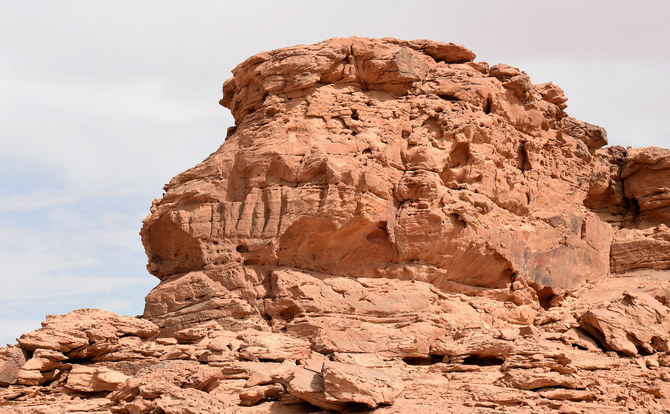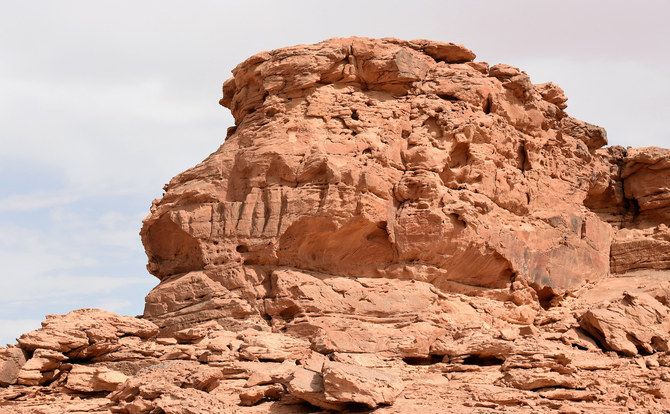DUBAI: A recent study has revealed that a series of camel sculptures in Saudi Arabia that were first discovered in 2018 are likely to be the oldest surviving large-scale animal reliefs in the world.
The researchers behind the new study, published in the Journal of Archaeological Science, believe that the life-size carvings of the camels are between 7,000-8,000 years old.

The figures were found in the northern province of Al-Jouf. (AFP)
This means that the sculptures are older than ancient landmarks like Egypt’s Pyramids of Giza, which are 4,500 years old, and England’s Stonehenge, which is 5,000 years old.
The figures, which include other animals such as a donkey, were found in the northern province of Al-Jouf.

The new study shows that the sculptures are older than ancient landmarks like Egypt’s Pyramids of Giza, which are 4,500 years old. (AFP)
According to the researchers, “Neolithic arrowheads and radiocarbon dates attest occupation between 5200 and 5600 BCE.
“This is consistent with measurements of the areal density of manganese and iron in the rock varnish. The site was likely in use over a longer period and reliefs were re-worked when erosion began to obscure detailed features. By 1000 BCE, erosion was advanced enough to cause first panels to fall, in a process that continues until today,” the text says, according to a report by the BBC.
The research was done by the Saudi Ministry of Culture, Max Planck Institute for the Science of Human History, French National Centre for Scientific Research and King Saud University.











